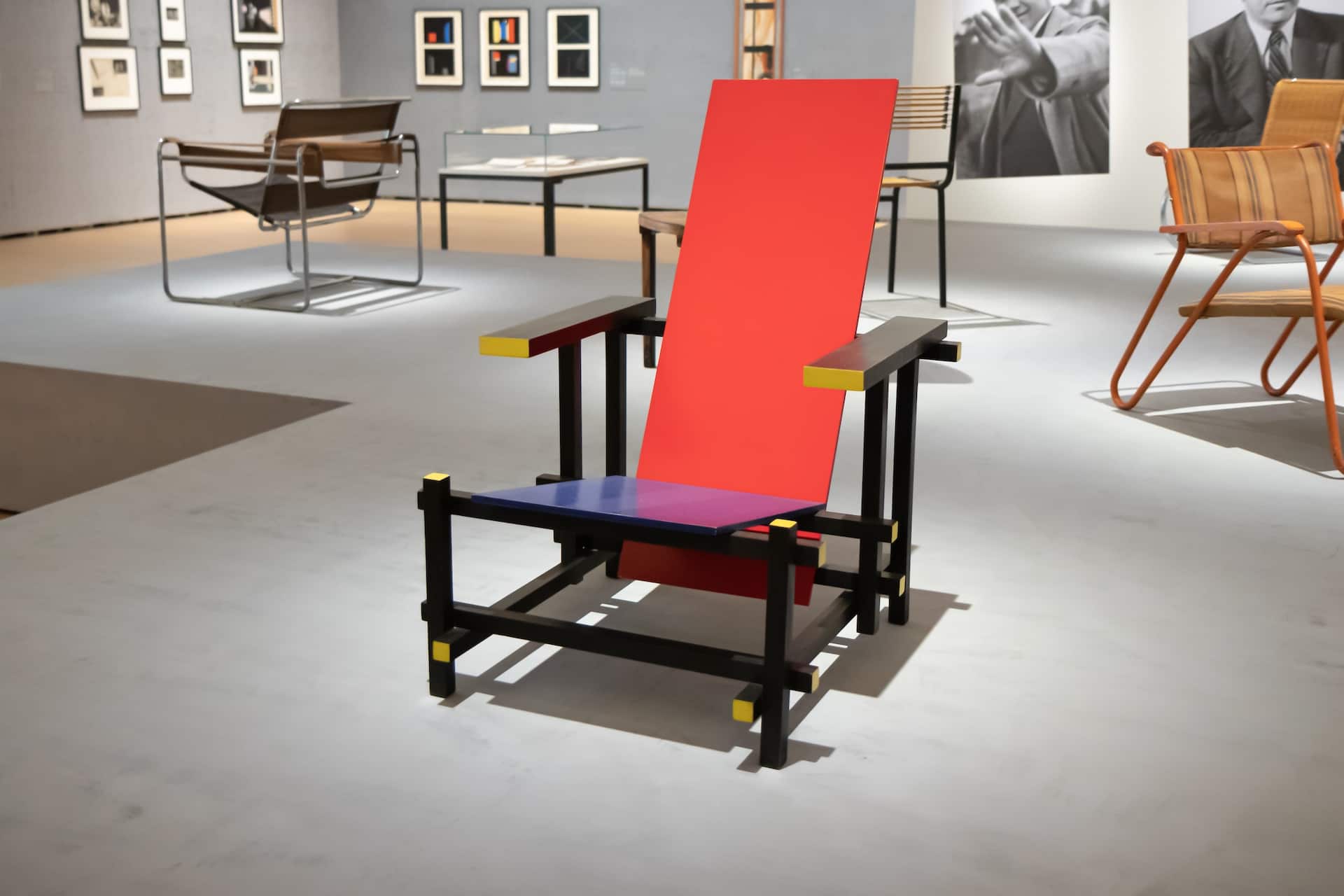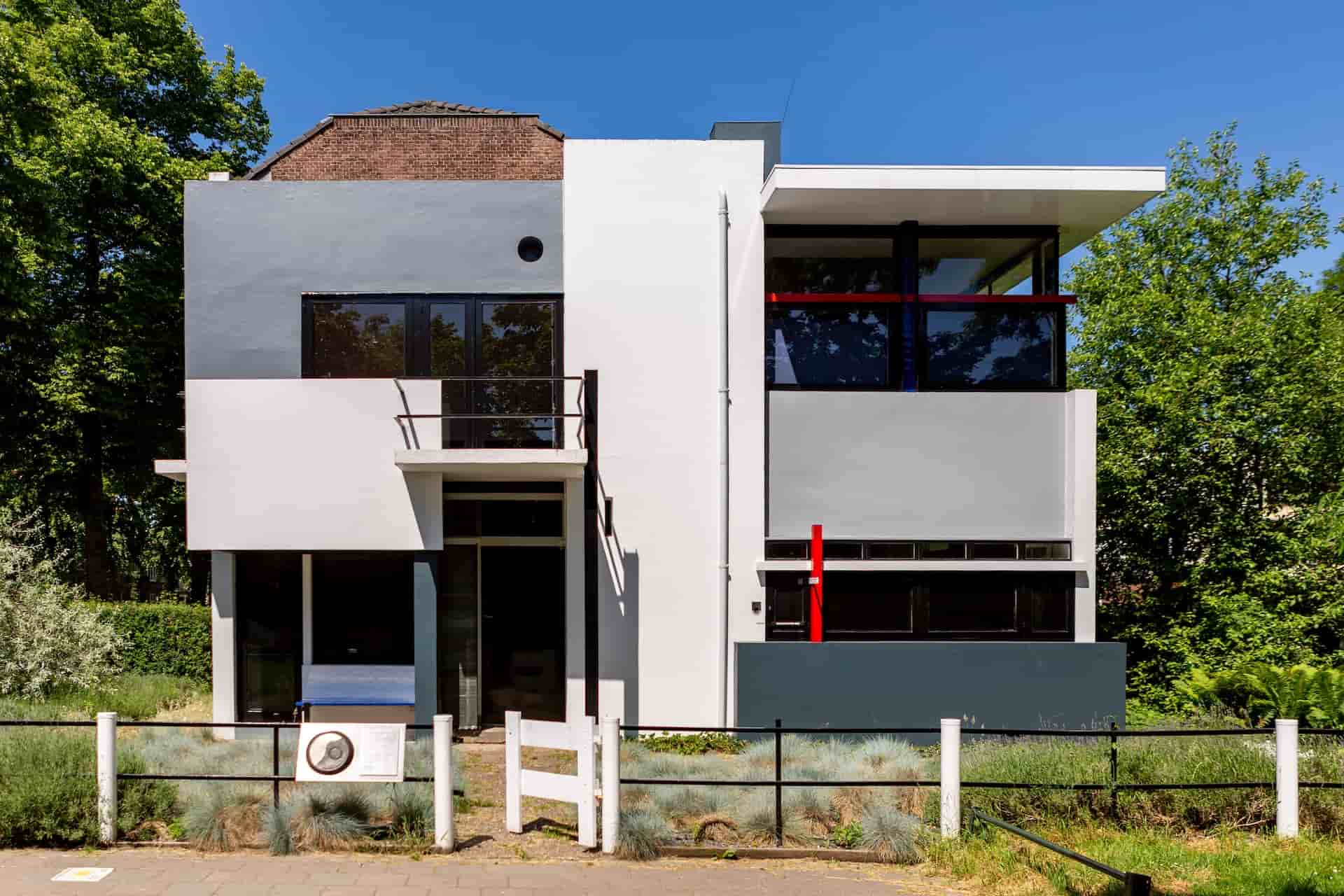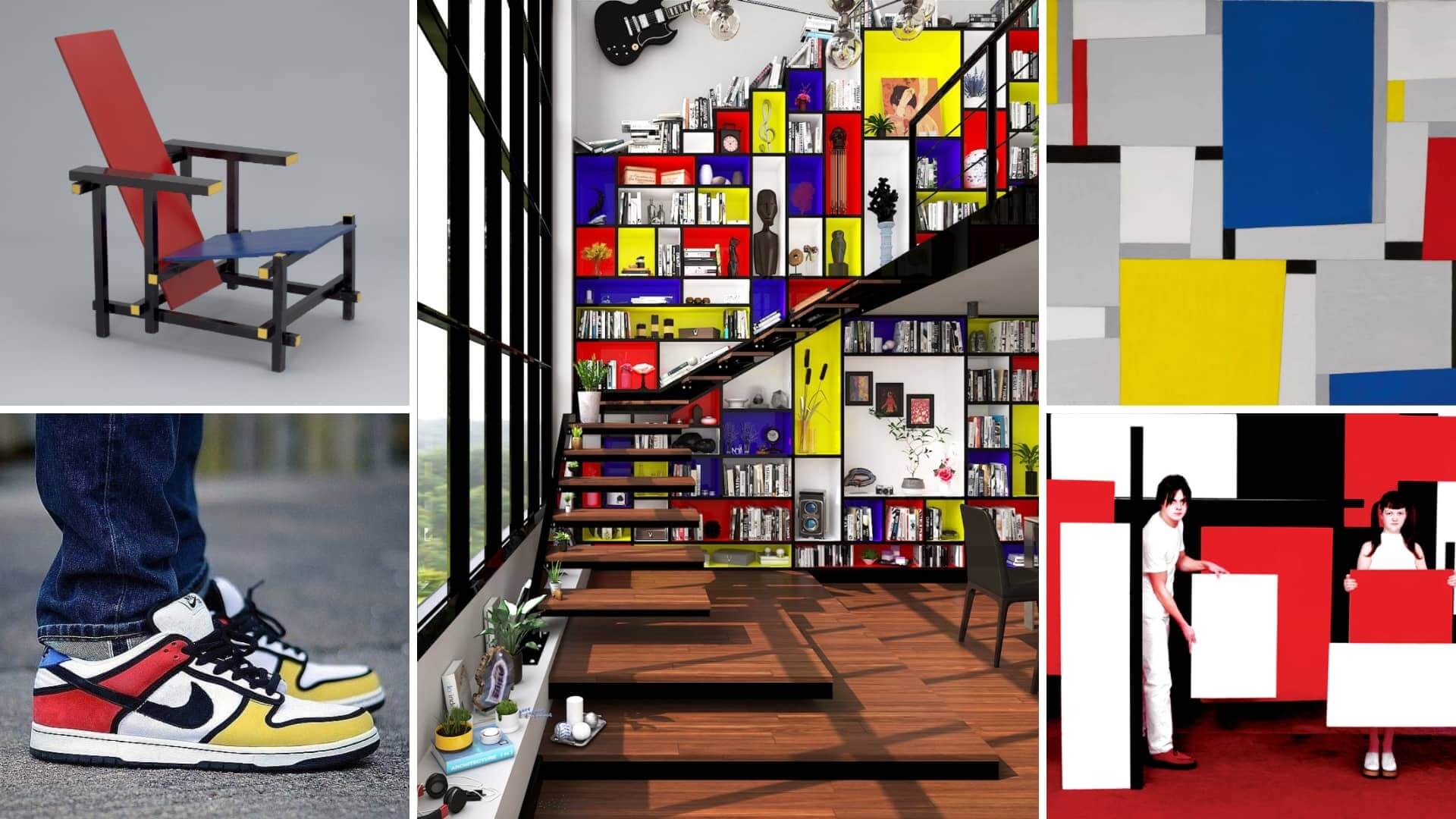De Stijl is one of the most iconic and influential artistic movements of the 20th century. Its members’ strict rules and lofty ambitions resulted in a style that still resonates today. To some, De Stijl paintings might just look like a collage of rectangles. But knowing the aims behind De Stijl design can help illuminate why its aesthetic is so profound and impactful.
What is De Stijl in Art Definition
Let’s define De Stijl
Translating De Stijl from Dutch leaves us simply with “the style.” While this might not seem super helpful in narrowing down what exactly De Stijl art is, this simple title is indicative of the style’s unadorned nature. For more, check out our index of art styles covering more specific and noteworthy movements.
So, let’s define De Stijl characteristics.
DE STIJL ART DEFINITION
What is De Stijl in Art?
De Stijl is a Dutch art movement which started in 1917. These De Stijl artists were known for their Neoplasticist style: an abstract use of geometric shapes, specifically rectangles, and primary colors, along with black and white. While De Stijl was a movement mainly within painting and architecture, it also could be found in typography, industrial design, textiles, and more.
Major Figures of De Stijl
- Theo van Doesburg (Founder, painter/designer)
- Piet Mondrian (Founder, painter)
- Gerrit Rietveld (De Stijl Architecture)
- Vimos Huszar (Painter)
- Bart van der Leck (Painter)
- J. J. P. Oud (De Stijl Architecture)
What is De Stijl in Art?
Tracing De Stijl’s History
While the De Stijl art movement had many artistic influences (namely Impressionism and Cubism), arguably its largest influence was World War I.
Because the Netherlands remained neutral through the war, Dutch citizens were largely unable to leave their country. This was true for Theo van Doesburg, an artist and writer who found himself isolated from larger arts movements around the continent and world.
Thus Van Doesburg decided to start his own movement.

Van Doesburg in 1915 • De Stijl movement artists
Once he had met a few like-minded artists also looking for collaborators, Van Doesburg started a magazine with painter Piet Mondrian titled “De Stijl.” It was in this publication where the guiding principles of the movement would be outlined, starting in 1917.
Van Doesburg and Mondrian had a utopian vision for what art could be. After the horrors that they and much of the world had witnessed in the world war, the two strove to create a redemptive art that could act as a universal language.
The mass production and industrialization that was kicked into high gear during the First World War had a profound influence on the De Stijl artists: they believed the individual was becoming irrelevant, and that art should reflect the simplest, most universal aspects of nature.

“It should find its expression in the abstraction of form and color, that is to say, in the straight line and the clearly defined primary color.”
— Piet Mondrian on what is De Stijl in art
In 1923, Theo van Doesburg and Piet Mondrian had a falling out. Van Doesburg began incorporating diagonal lines into his paintings (gasp!) and Mondrian considered the act a betrayal to the fundamental tenets of the form. The dispute resulted in Mondrian leaving the De Stijl art movement and pursuing its stricter variation, what he referred to as “Neoplasticism.”
Van Doesburg continued the De Stijl design publication until his death in 1931. This marked an end to the movement, as its other members were only in contact with each other remotely and, without a core leader, they naturally followed their own artistic paths.
What is De Stijl In Art?
Famous De Stijl Works
Although the De Stijl time period only officially lasted for 14 years, the art movement produced numerous groundbreaking and iconic works in painting, architecture and beyond.
Composition A, Piet Mondrian (1923)
If one were to imagine a De Stijl art piece in their head, some variation “Composition A” would probably be what they envision. It’s a classic example of De Stijl characteristics (or what Mondrian would have called Neoplasticism): primary colors, straight lines creating rectangles and squares. The utopian simplicity of works like “Composition A” are still striking today.

De Stijl on full display in Mondrian’s work • De Stijl movement artists
Composition VII (The Three Graces), Theo van Doesburg (1917)
“Composition VII” provides another great example of De Stijl properties, while also demonstrating its range. Like “Composition A,” the painting only utilizes primary colors (and white and black), and also comprises rectangular shapes. But “Composition VII” strikes a completely different tone than Mondrian’s piece; even with such strict rules, the universal language the two strove for had a wide vocabulary.

De Stijl founder Theo van Doesburg’s use of the form’s values • What is De Stijl in art?
Red and Blue Chair, Gerrit Rietveld (1918-1923)
“Red and Blue Chair” is perhaps the most famous non-painting example of De Stijl. Architect and designer Gerrit Rietveld’s use of De Stijl ideas is clear in the piece: primary colors, straight lines. The “Red and Blue Chair” shows that De Stijl could be applied successfully to a range of mediums.

De Stijl architecture • What is De Stijl in Art?
Rietveld Schroder House, Gerrit Rietveld (1924)
Because De Stijl’s tenets are so strict, the Reitveld Schroder House is technically the only fully De Stijl building ever made.

De Stijl architecture
But as you can probably tell, a lot of the ideas used in the building of the house have been used in countless other buildings. Today, the house fits in a long line of other modernist homes.
Examples of De Stijl
The Influence of De Stijl
As short as the De Stijl time period was, the movement made massive waves in the development of 20th century art. Most immediately, the De Stijl movement artists’ ideas can be found in the Bauhaus movement, as many De Stijl disciples went on to work at the school.
De Stijl also had a large influence over the International Style, a modernist approach to architecture that was incredibly popular from the 1920s through the ‘70s. The movement’s effect can be found in the its heavy use of flat, geometric surfaces, the rejection of ornamentation, and the wholesale embrace of mass production.
De Stijl aesthetics can still be seen today in everything from photography to fashion. Just look at the Nike Dunk Low Pro SBs:

Nikes nicknamed the “Piet Mondrian” • Examples of De Stijl
Or the White Stripes album titled De Stijl:
De Stijl: all the cool kids are doing it • De Stijl artworks
De Stijl’s color theory, which both Piet Mondrian and Theo van Doesburg wrote about extensively, is still referred to by many artists today. You can see De Stijl’s stark color contrast and harsh geometry in a lot of early color animation in film, as animators wanted to make full use of the colors at their disposal while also creating images simple enough to draw by hand repeatedly.
One can look at the Disney film Sleeping Beauty from 1959 to see some of De Stijl’s influence on cinema. While of course it’s not strictly De Stijl, the sharp geometric patterns and distinct color palettes certainly is indebted to the movement.

Sleeping Beauty (1959)
In a larger sense, De Stijl’s philosophy, that of producing art that could be a universal language, is a philosophy that still holds just as much weight among artists today, whether they be working in painting, video games, or film.
UP NEXT
Explore More Styles and Movements
This was just one of many fascinating segments of art history. There are many eras, styles, artists, and movements to discover. Let's continue our study by choosing the next stop on your way to becoming an art aficionado. Below you can visit our Art Styles Index, our Art History Timeline, or choose an individual movement.
Showcase your vision with elegant shot lists and storyboards.
Create robust and customizable shot lists. Upload images to make storyboards and slideshows.
